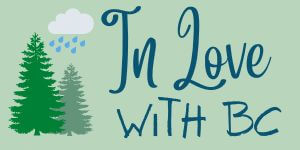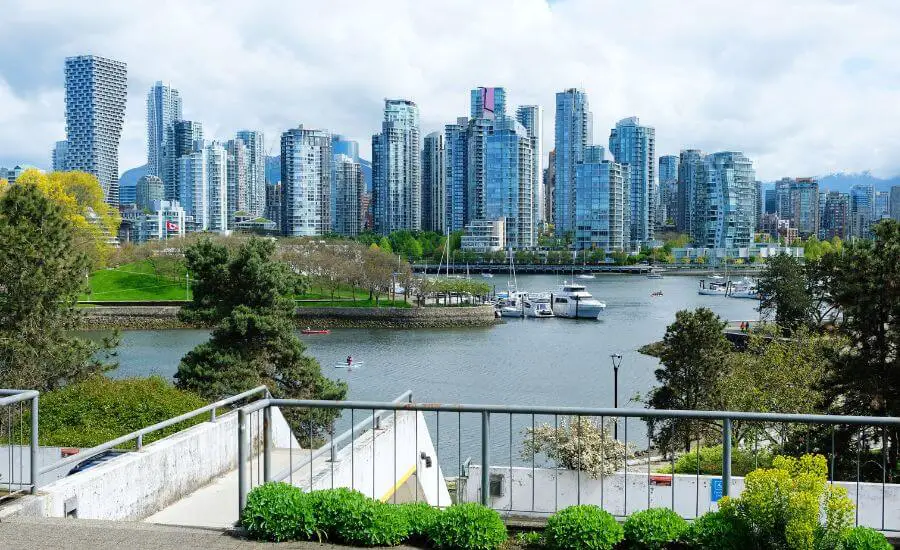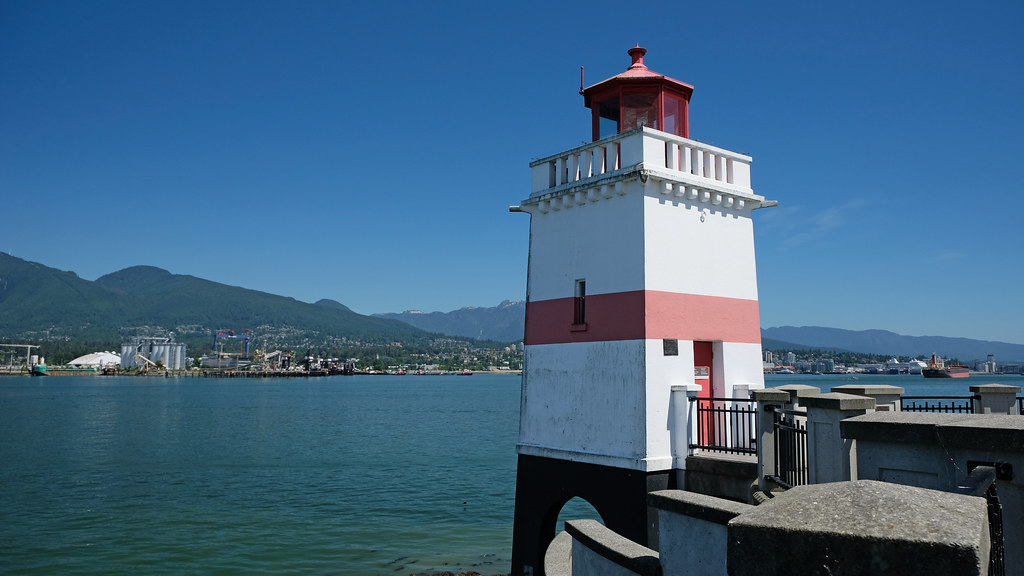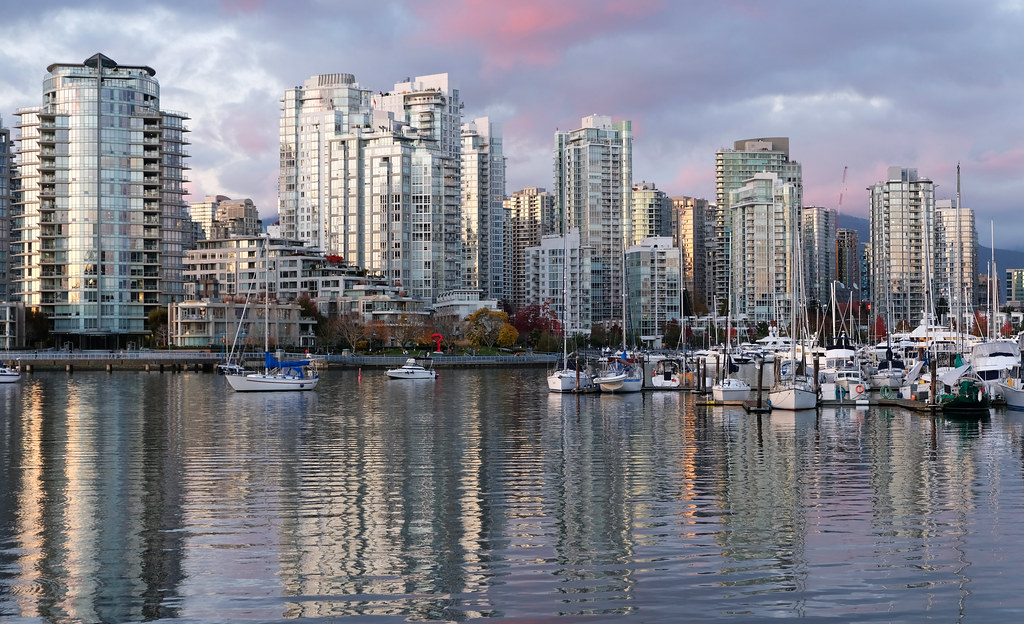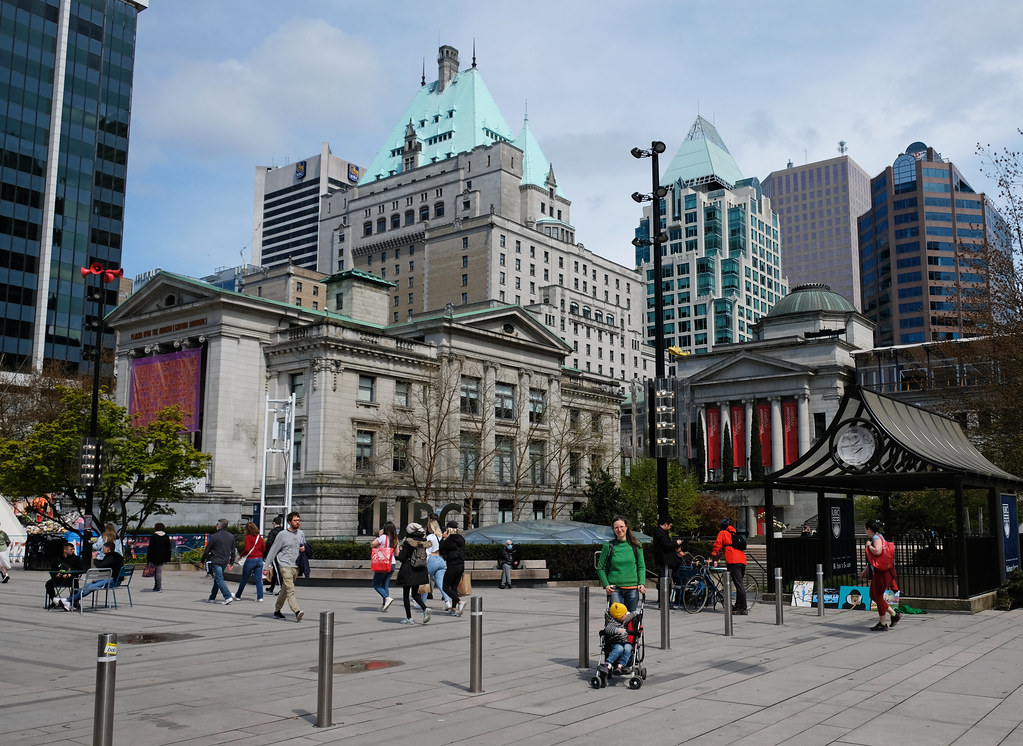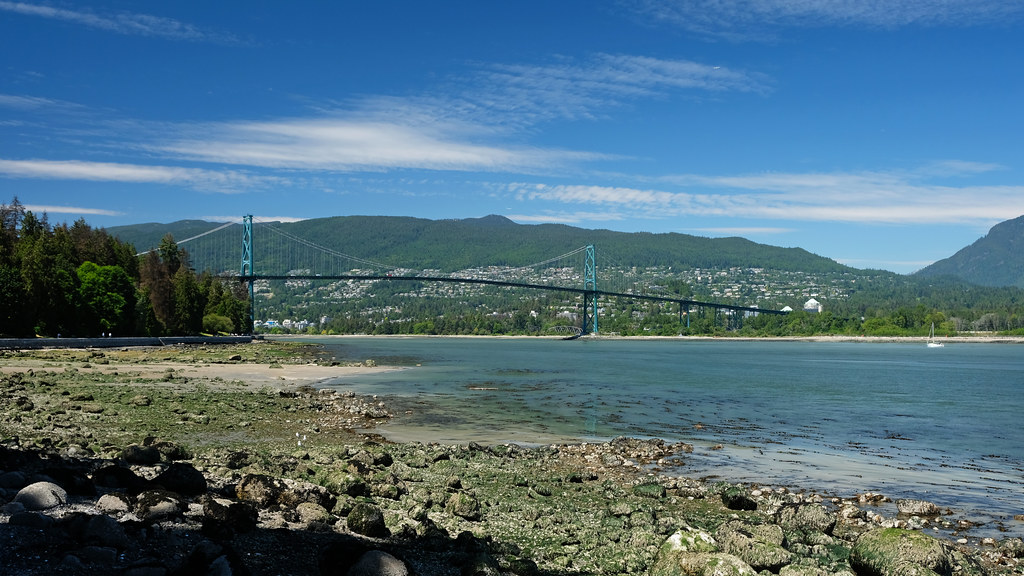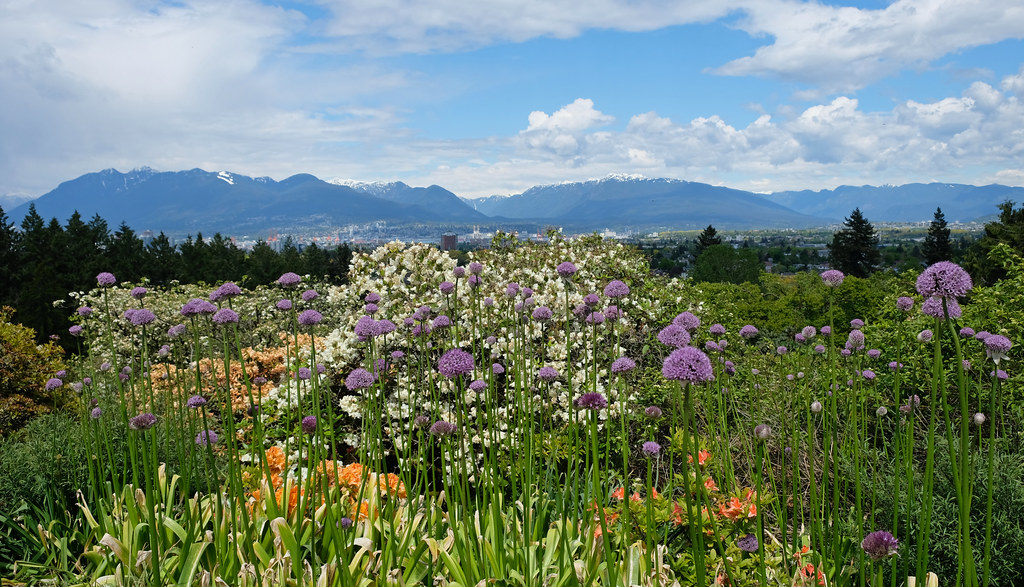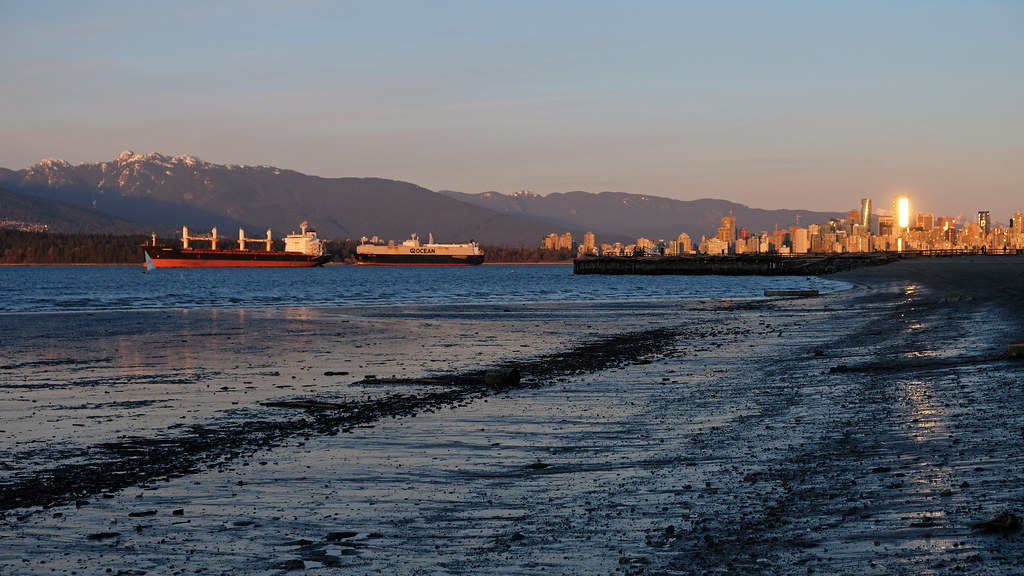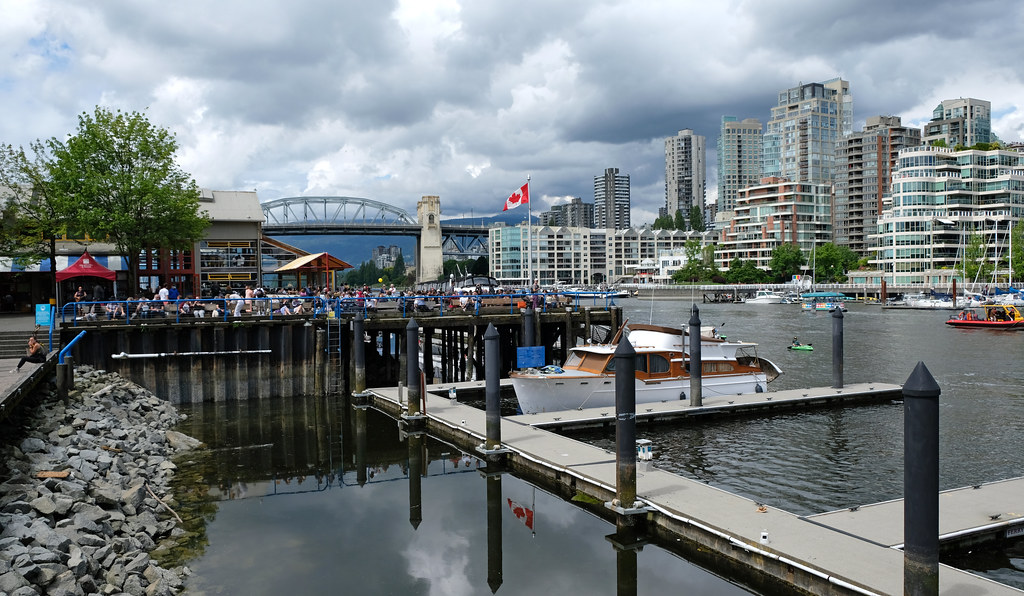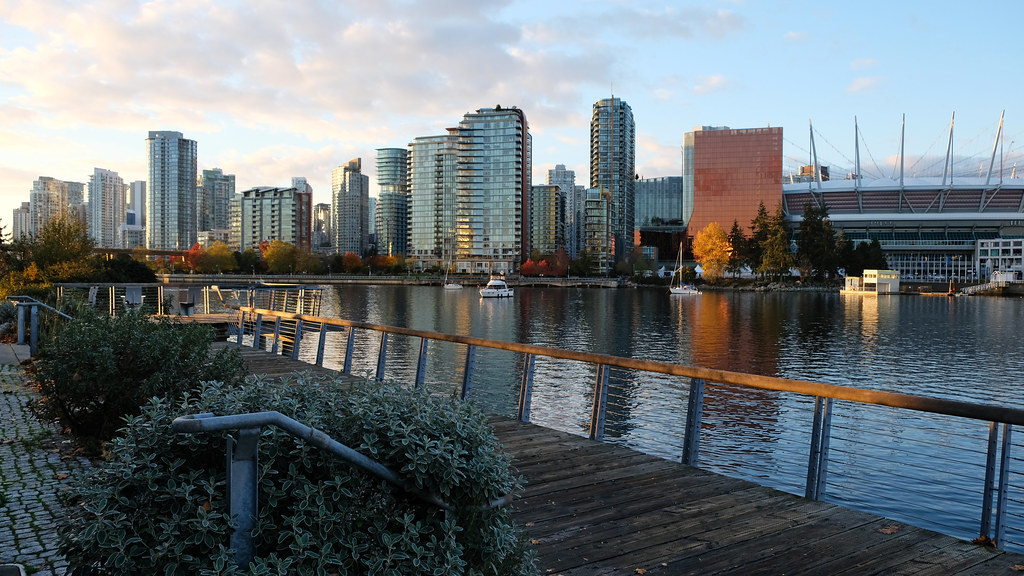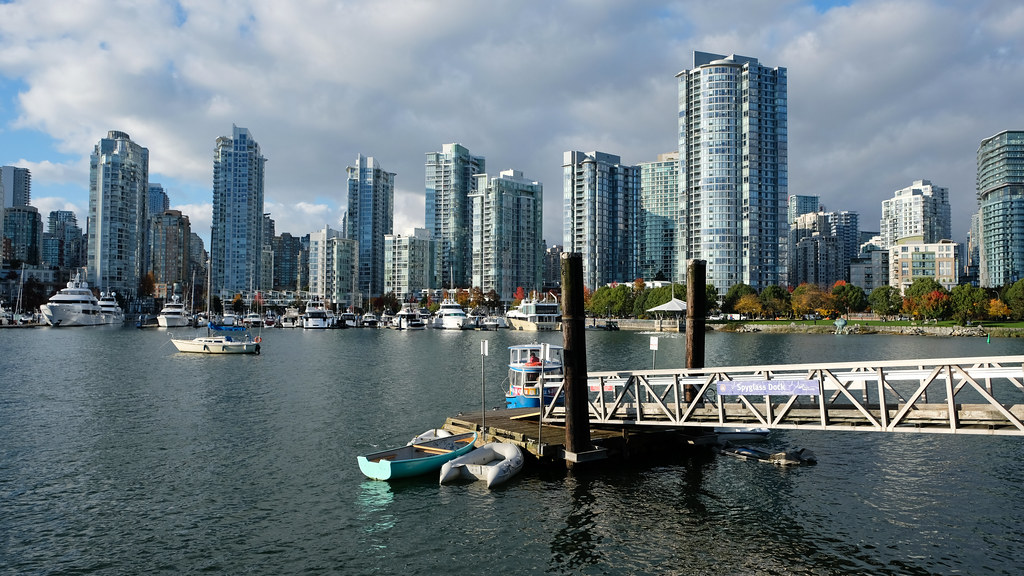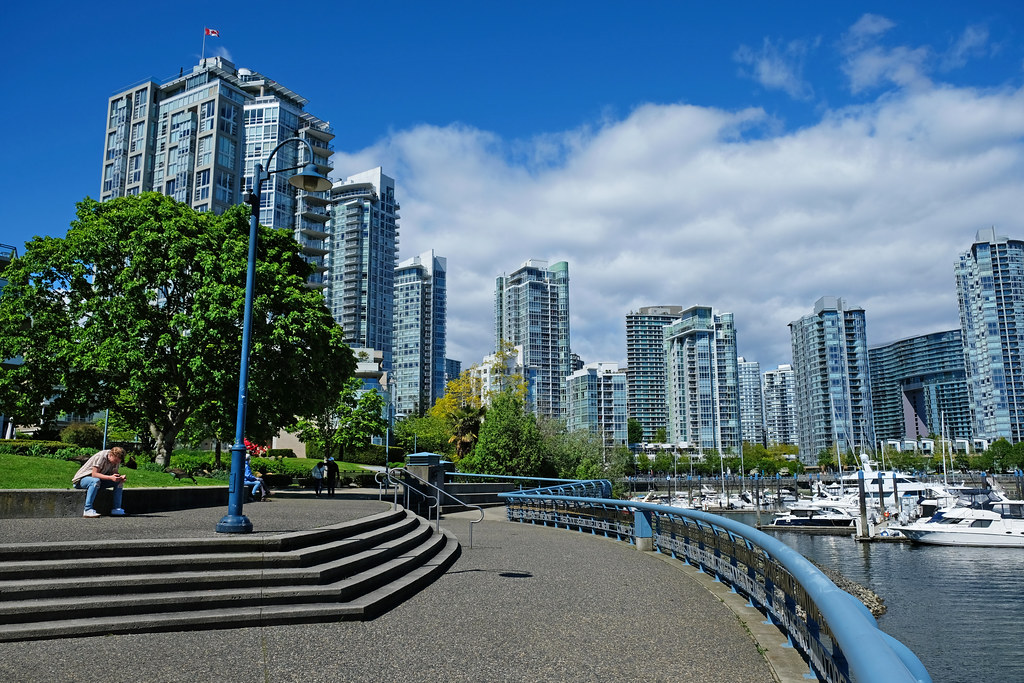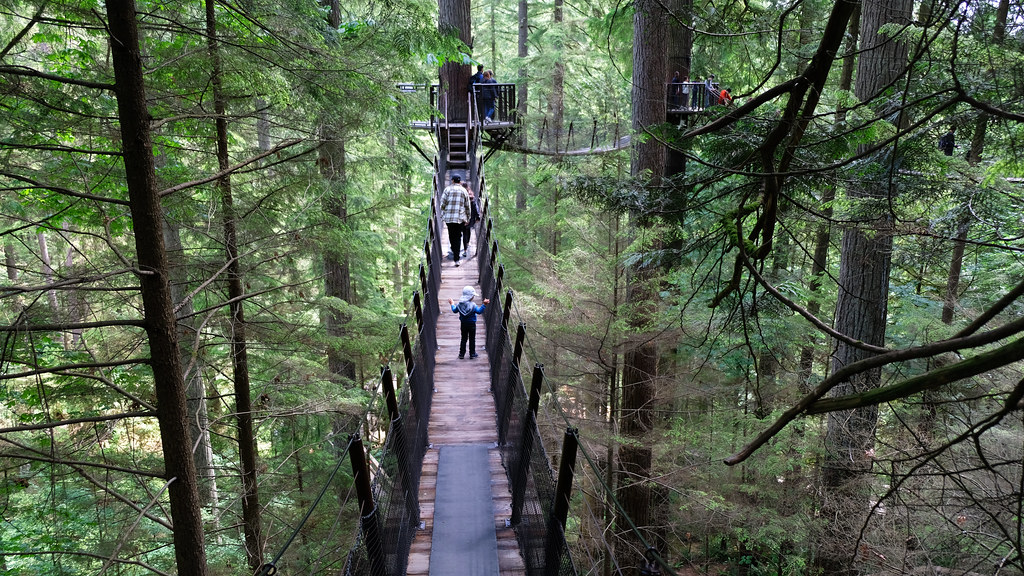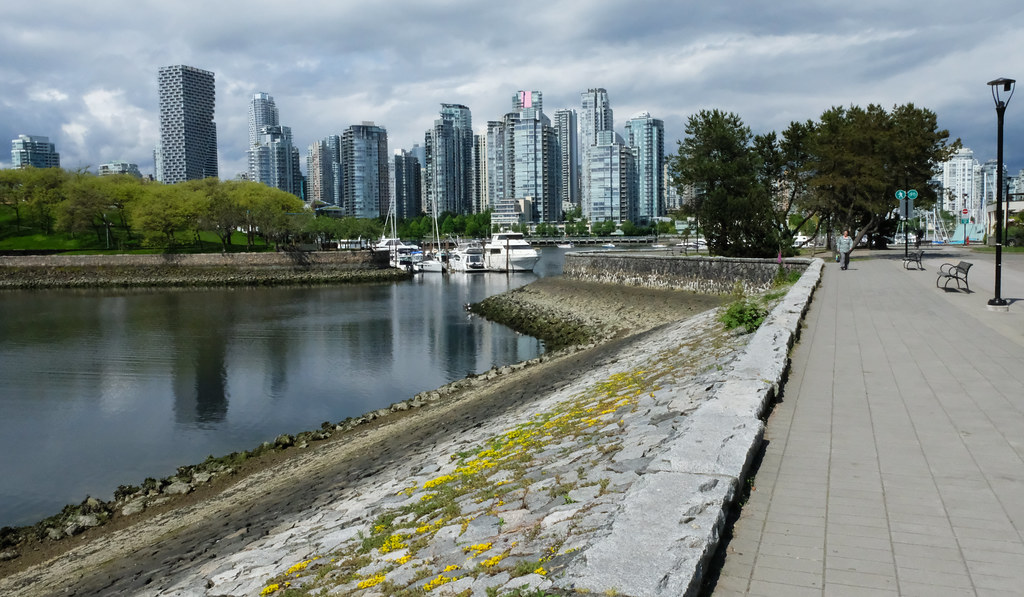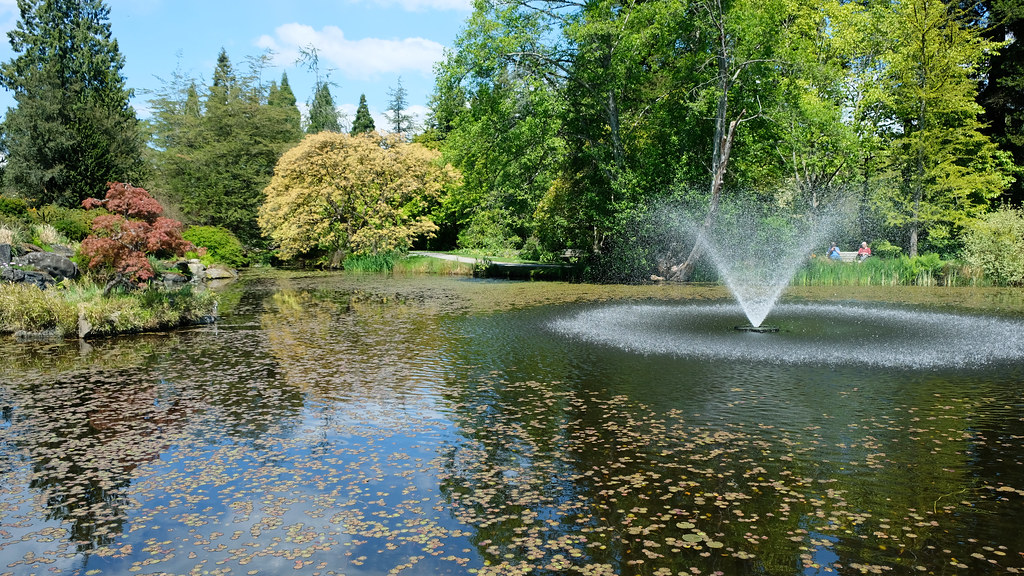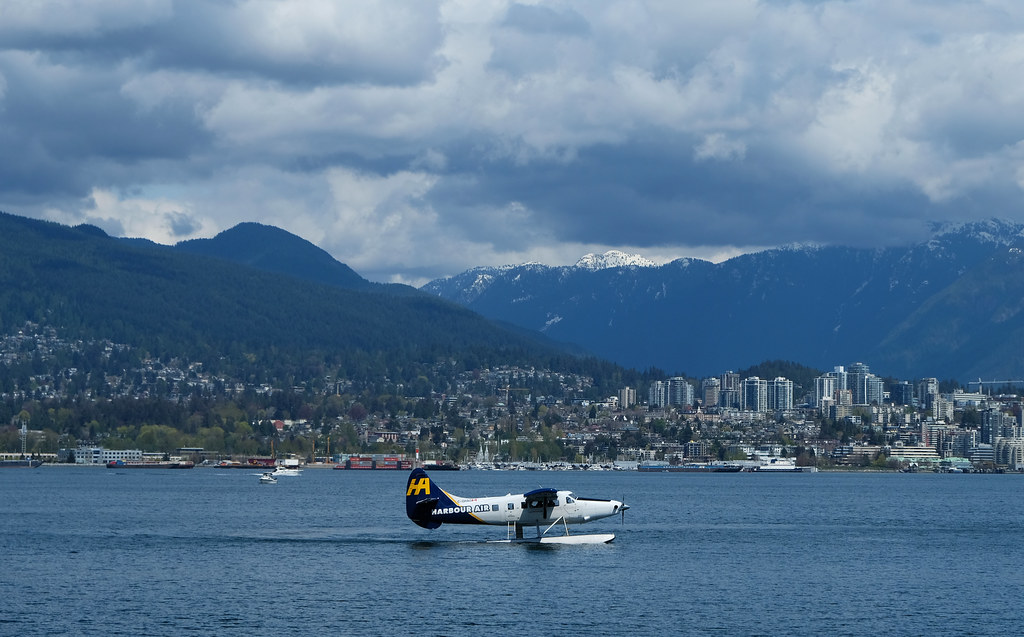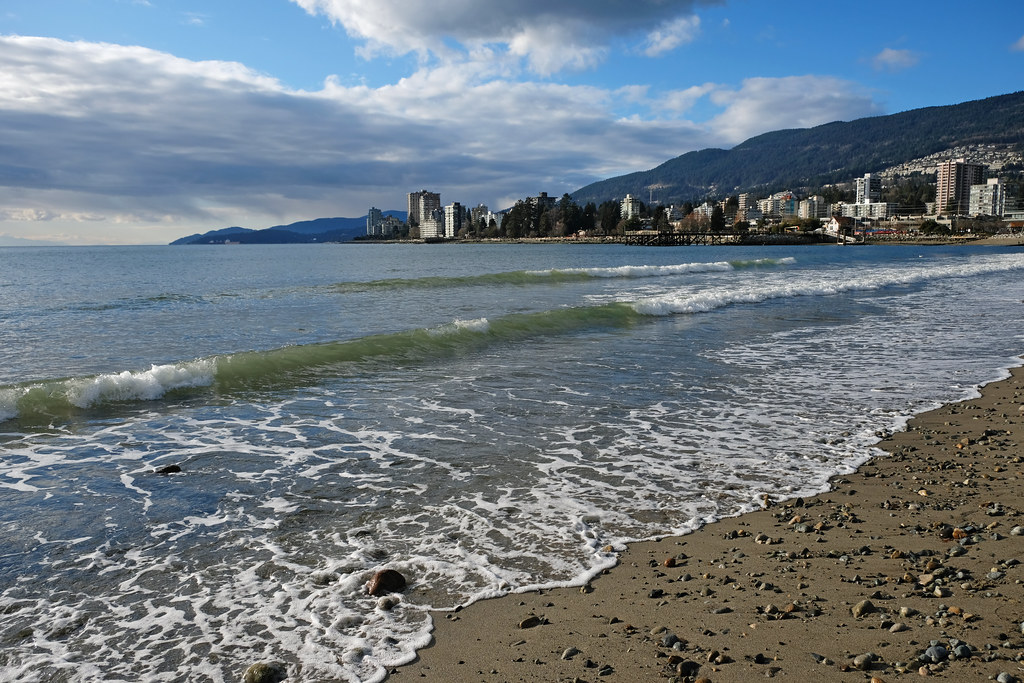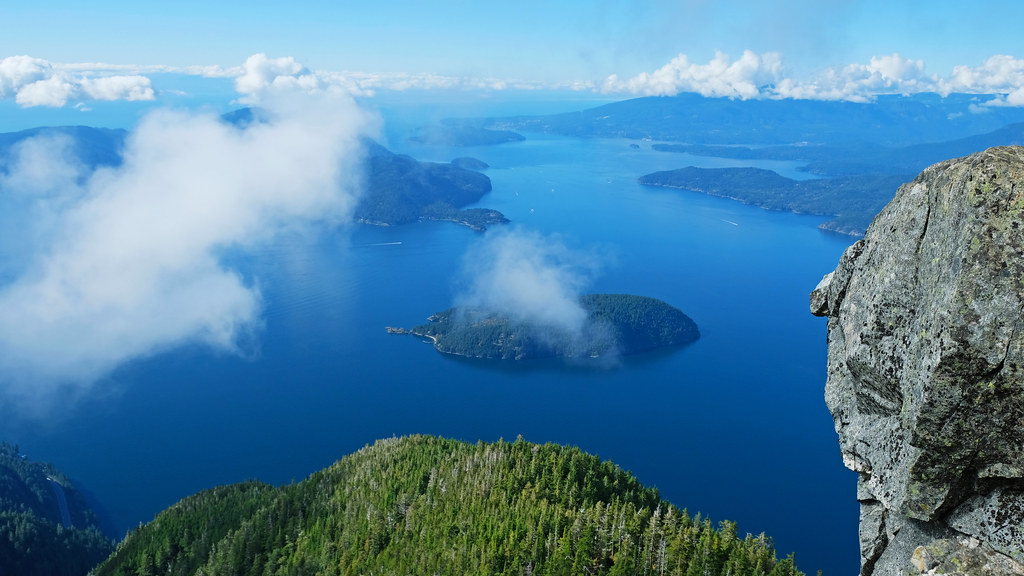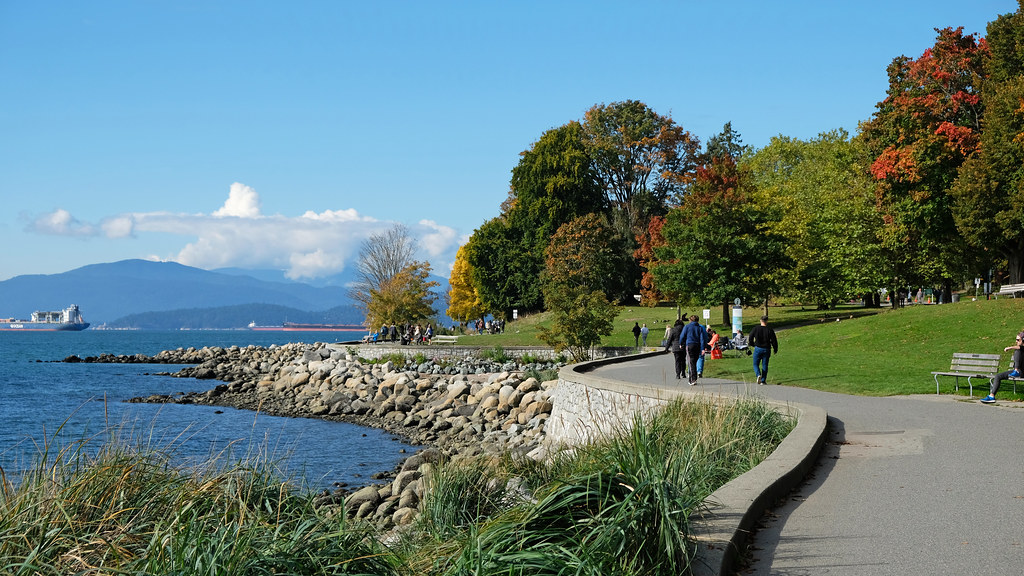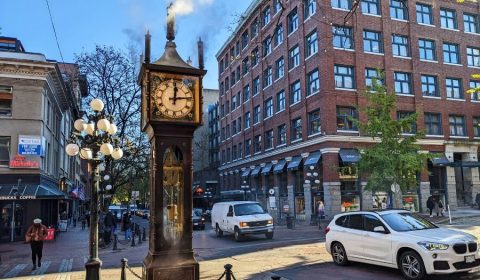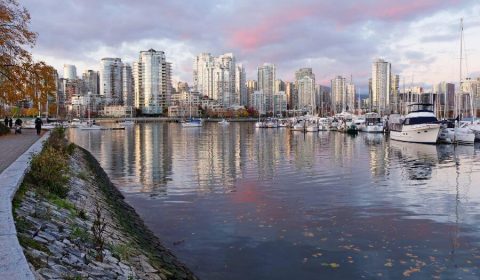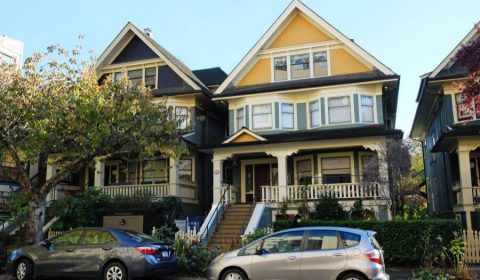Vancouver is one of the most beautiful cities in the world. If you like San Francisco, Miami, Seattle, Sydney or Melbourne, then Vancouver will be your next love. It offers skyline views, ocean and mountain views, a mix of vibrant city life and lush green rainforest trails. And there’s just something about coastal cities that you can’t resist – or is it just us? In this post I’ll show you how to spend 3 days in Vancouver so that you instantly fall for it.
Why should you visit Vancouver?
Should you? It’s time for a confession. I didn’t expect much from Vancouver when we moved here. I haven’t been before, and while I knew that I’d love the ocean and the mountains (and I was so-so deeply in love with the West Coast!), I didn’t bother dreaming about the city itself. Then we arrived.
It didn’t take long for Vancouver to sweep me off my feet. I was excited for the mountains and the ocean, and Vancouver is connected to both. It has amazing walking and biking paths, trails, beaches and parks which make it one of the most beautiful and livable cities in the world in my eyes. Did I mention the views? I mention them again, because they are epic!
All in all, Vancouver is a great place to kick off your Western Canadian road trip. It offers much more than what fits into 3 days, and the opportunities are endless if I count in the nearby mountains and trails. But let’s see how to cover the highlights within a limited time.
Best accommodations in Vancouver:
- Luxury: OPUS Vancouver (central location)
- Mid-range: O Canada House Bed & Breakfast
- Budget: Samesun Vancouver (central location)
Visit Vancouver in 3 days: itinerary overview
Day 1: Gastown, Canada Place, Robson Street, Stanley Park, English Bay Beach
Day 2: Queen Elizabeth Park, Kitsilano Beach, Granville Island, Olympic Village, Yaletown
Day 3: Capilano Suspension Bridge Park, Lynn Canyon Park, Deep Cove
If you have more time to spend in Vancouver, just keep on reading. I have more recommendations at the end of the post.
Read about even more awesome things to do in and near Vancouver:
- 12 Best Things To Do In Stanley Park, Vancouver
- 12 Best Waterfalls Near Vancouver, British Columbia
- 18 Best Viewpoints In Vancouver
3 days in Vancouver itinerary
So after spending a year in Vancouver, this is how I’d spend my time if I had only 3 days. Each day takes you to quite different neighborhoods, and within one day I planned places and activities that are close to each other. But you can easily change the order of the days.
So let’s see what to do in Vancouver in 3 days:
Day 1: Gastown, Canada Place, Robson Square, Stanley Park, English Bay Beach
If you stay in Downtown Vancouver, simply walk, if you stay further out, take the SkyTrain to the Waterfront station. You’ll explore the best of downtown and Stanley Park today.
Gastown
Start your sightseeing walk in Gastown. It’s the oldest neighborhood in Vancouver, from which the city grew in the 1870s. Its typical characteristics are the cobbled streets and Victorian architecture, and you find tons of galleries, boutiques, souvenir shops and restaurants here. And the Gastown Steam Clock. Being one of the few functioning steam-powered clocks in the world, it whistles and blows steam every 15 minutes. It’s a good starting point for your walk in Gastown, then just continue on the surrounding streets.
Get up to the Vancouver Lookout to enjoy panoramic views of the city and the surrounding area.
Gastown is known for its busy nightlife and trendy food and drink scene, so feel free to return here any night you fancy.
Canada Place
From Gastown you can walk back to the waterfront and head to Canada Place. It’s home to the convention center and the ferry terminal, but it’s much more. This iconic building looks like a giant sailboat, and walking The Canadian Trail on its west promenade offers pretty views of the North Shore, Stanley Park and the Burrard Inlet, and it also gives insight into the history of Vancouver.
Gaze at landing seaplanes and docking cruise ships that look like skyscrapers on water. Enjoy a 4D journey through iconic places in Canada in the FlyOver Canada film experience. Then continue on Hornby Street and get lost among the skyscrapers of the business district…
Robson Square
Robson Square is the main square in Downtown Vancouver, and surrounding Granville Street, Hornby Street and Burrard Street are the heart of the business district, with giant glass buildings reflecting into each other. You find the Vancouver Art Gallery on Robson Square, and it also offers pretty downtown views from the different levels of the square, and an ice rink in winter.
We were (and are) fascinated by the skyscrapers of the business district. Coming from Europe, this is not the typical city scene we are used to, and no matter how many times we walk there, it doesn’t cease to impress. (Our neck hurts, too, because we look up so often.) If you like shopping (we don’t), here you can hunt for unique boutiques and souvenir shops, or kill hours in a large shopping center.
If you like street art and quirky spots, don’t miss Alley Oop. It’s a narrow side street just off of Seymour Street, and it has an unusual amount of pink color.
Stanley Park
From Robson Square you can walk back to the waterfront, and continue to Stanley Park through the Coal Harbor neighborhood. The waterfront walkway is part of the Seaside Greenway, which is a 28 kilometers long waterfront path for pedestrians and bikers. It’s among the longest uninterrupted urban walking/biking paths in the world! It starts at Canada Place, and you can walk (or bike) to Stanley Park, English Bay, David Lam Park and all the way to Kitsilano Beach and Spanish Banks Beach on the other side of False Creek.
Stanley Park itself has about 10 km of that walkway, nicknamed as the Seawall. This park is one of the highlights of Vancouver, anyway, and it’s more than “just a park”. It’s the oldest and largest urban park in Vancouver, and one of the best ones all over the world. (We might be a bit biased, but only a tiny bit.) I’ve written a separate post about all the great things to do in Stanley Park. Walking or biking the Seawall is certainly one, but you can visit its stunning beaches, the Vancouver Aquarium, the Totem Poles or find a giant tree to hug.
Spend at least a few hours in Stanley Park. Biking around the Seawall takes about 1-2 hours, the Vancouver Aquarium is another few hours, and you still need to add some time chilling out on the beaches. It can easily fill a full day if you have the time, but definitely plan to spend the whole afternoon of your first day there.
Watch the sun set at English Bay Beach
This last one could be a highlight, but it depends on the weather, too. Many of the Vancouver beaches are facing west, so you can see magical ocean sunsets – if you can see the sun. Two things to mention here: the sun sinks behind Vancouver Island and not into the ocean, and even on cloudy days you often get sunshine in the late hours of the days when the sun gets lower than the clouds.
Where to go for sunset? Second or Third Beach in Stanley Park or English Bay Beach (also called “First Beach”) just on the border of Stanley Park are all perfect choices. You can choose to walk to Sunset Beach, too, it’s along the Seaside Greenway as you walk south of English Bay Beach.
If you visit in the summer, prepare for late sunsets. The sun sets around 9:30 on the longest day in June, and around 9 pm at the end of July. Winter comes with short days and early sunsets – as early as 4:15 pm in December.
Day 2: Queen Elizabeth Park, Kitsilano Beach, Granville Island, Olympic Village, Yaletown
The second of your 3 perfect days in Vancouver starts with a scenic public park and continues with beaches, ocean views and skyline views. The best way to explore is by bike, but public transport works, too.
Queen Elizabeth Park
Queen Elizabeth Park sits on the top of Vancouver, at 125 meters, offering views of the city and the mountains. The panorama is the best from the terrace in front of Bloedel Conservatory, then you can walk to the Quarry Gardens. They reminded us a bit of Victoria’s Butchart Gardens, but they’re much smaller and free to visit. The main garden is walled and has flowerbeds, small creeks with bridges, and even a tiny bamboo forest. The North Quarry Garden is even smaller and feels more oriental.
Our favorite time in the park is cherry blossom in mid-April, but the golden-red fall colors are also special. If you have time, visit the Bloedel Conservatory. It’s a temperature-controlled closed dome that holds a tropical paradise and is home to over 100 exotic birds and 500 exotic plants. It’s a particularly great activity on a rainy day.
Kitsilano Beach, Jericho Beach and Spanish Banks Beach
Kitsilano Beach on a cloudy day
From Queen Elizabeth Park it takes about half an hour to get to Kitsilano Beach either by bike or bus. Kitsilano is the name of the neighborhood, as well, but the beach is the most famous sight, and it gives a funky, laid-back vibe to the whole area.
Kitsilano Beach offers distant views of Downtown Vancouver and the North Shore Mountains. Whenever the weather is good (mostly in the summer months), it’s full of people sunbathing, playing volleyball, swimming or enjoying the ocean with a SUP. In the colder part of the year Kitsilano Beach can get very windy, so you can marvel at giant waves or people flying kites.
If you explore by bike, you can quickly get to Jericho Beach, Locarno Beach and Spanish Banks Beach, and it’s a pretty coastal route along the beaches and with distant city and mountain views. Walking there is just as nice, but takes more time.
Granville Island
The rest of the day is basically getting from Kitsilano Beach to Yaletown, but it’s a delightful journey with a lot to see on the way. First, you bike (or walk) through Vanier Park – stop for the fantastic views as often as you fancy. Then visit Granville Island.
It’s not a real island, but a peninsula connected to Vancouver: an old industrial district turned into a quirky, lively, colorful place full of restaurants, shops, parks and skyline views. It’s home to the Granville Island Public Market where you can choose from fresh and baked goods, fruits and sweets. Beer lovers, don’t miss the Granville Island Brewery.
Olympic Village
After Granville Island, continue along False Creek on the Seaside Greenway. You’ll pass Spruce Harbor Marina which is a tiny piece of a residential district on water, because the members of the cooperative live aboard their vessel. Then comes Charleson Park, Cambie Bridge, Habitat Island (which is accessible on foot at low tide) and the Olympic Village area. The Seaside Greenway takes you to all of them, so just stick to the waterfront walkway and enjoy the views.
aquabus stop
Olympic Village was built to be the home of the athletes at the 2010 Winter Olympic Games. After the Olympics the buildings were converted to condos, and today Olympic Village is a residential neighborhood near False Creek, with water and mountain views. It’s also one of the greenest communities in the world. You can’t help noticing the green roofs, and those are the most easily visible, but not the only sustainable solutions in Olympic Village. Creekside Community Center is a great example, consuming 50% less energy than a standard building with the help of solar power, green roof technology and rainwater.
You can walk along False Creek to see the neighborhood, or rent a kayak and see it from the water.
Yaletown
Getting to Yaletown from the Olympic Village is either a scenic waterfront walk (or bike ride), or a short ride with the tiny, colorful aquabus. Yaletown is a mix of old and new, with historic warehouse buildings turned into trendy restaurants or boutiques and modern high rises on the waterfront. It’s buzzing with life and outdoor terraces (uhm… again, mostly in the summer months), and David Lam Park and George Wainborn Park offer pretty views in any season.
Those longing for a fun night out are exactly at the right place in Yaletown. Take your time getting to know the cocktail scene, pubs and clubs.
Day 3: Capilano Suspension Bridge Park, Lynn Canyon Park, Deep Cove
The third day is about North Vancouver which is technically not part of the city of Vancouver, but belongs to the Greater Vancouver metropolitan area. Yet one of the most famous attractions of Vancouver can be found here: Capilano Suspension Bridge Park.
We are obsessed with North Vancouver, and its rainforests, waterfalls, canyons, beaches and fjord (kind of) give it a truly special charm. These attractions can be reached by public transport from Downtown Vancouver, however, you can get to them more quickly by car. (Minus congestions, but that depends on the time and day.) If you start a road trip after visiting Vancouver, we recommend renting a car for this third day already. If you wouldn’t rent a car otherwise, take advantage of Capilano Park’s free shuttle and other public transit (SeaBus and bus).
Capilano Suspension Bridge Park
With astonishing treetop walks and suspension bridges, this park is among the most popular attractions of Vancouver year-round. The Capilano Suspension Bridge stretches 137 meters (450 feet) across the Capilano River Canyon, connecting both sides of the park. The Cliff Walk runs along the high cliff face above the canyon, and the Treetop Adventure has a series of small suspension bridges leading you through the canopy of an amazing West Coast rainforest.
This is a paid attraction, and tickets are quite expensive. Is it worth visiting? Here’s what we think, considering all the places and parks we know in North and West Vancouver: there are lots of breathtaking natural attractions that are completely free to visit, even suspension bridges. However, the treetop walks, the cliff face pathway and the giant suspension bridge of Capilano are one of a kind. Think of it as an adventure park rather than a natural attraction.
Lynn Canyon Park
If you prefer a free, less busy park with unspoilt nature and its own suspension bridge to famous Capilano Park, head to Lynn Canyon Park. I think it’s worth visiting both of them, actually, and I’m deeply in love with them.
The walking and hiking paths of Lynn Canyon Park give access to the canyon and the incredibly turquoise, rushing Lynn Creek, Twin Falls and 50 meters long Lynn Canyon Suspension Bridge. The rainforest is also spectacular. The park connects with other trails in Lynn Canyon and along Lynn Creek. I’ve written a separate post about hiking in the area – read it here. Warning: you’ll be tempted to spend a full day hiking here. Do it if you have the time. 🙂
Deep Cove
Deep Cove is the easternmost part of North Vancouver and also the name of the small bay beside it. Kayaking from Deep Cove to the Indian Arm, a scenic fjord surrounded by mountains, is a popular activity for a good reason. You can rent a canoe, kayak or paddleboard from the Deep Cove Kayak Centre and choose from the recommended routes. But don’t just expect to show up there and rent anything on summer weekends. Book well in advance.
If you’ve never tried kayaking or canoeing, it’s a great place to start as the water is generally calm (some days are exceptions), and the scenery is breathtaking. Or would you rather stay on the ground? Take a walk in Panorama Park.
More things to do in Vancouver
Do you have 4 days in Vancouver? 5,6 or even more? If you love the ocean and the mountains, you’ll never get bored here. I’ve already mentioned additional activities, but here I collected a list of amazing ones, along with a rough estimation of the time you need for them:
Bike or walk the Seaside Greenway (all the way)
Estimated time: full day
Majority of this route is already included in the 3 day itinerary in Vancouver, so it won’t add a full day, but will definitely add even more stunning views. You can visit the very best parks and beaches in Vancouver. The 28 kilometers pathway is for pedestrians and bikers, with a separate bike lane for the most part. Here’s the route on a map.
Marvel at the downtown skyline at night
Estimated time: 1-3 hours
Get the best night views of the downtown from Charleson Park and Vanier Park. Walk from Vanier Park to the Science World if you have a few hours, and enjoy the sparkling skyline all the way. (It’s part of the Seaside Greenway, by the way.) Or walk from Lost Lagoon to Brockton Point in Stanley Park to see the downtown from the other side.
Go on a whale-watching tour
Estimated time: 3-6 hours
The West Coast is one of the best places for whale watching in the world, because thousands of whales migrate through these waters between March and October each year. Tours leave from Granville Island and Steveston (outside of Vancouver, but still in Metro Vancouver).
Visit the Vancouver Aquarium
Estimated time: 3-4 hours
It’s not the largest aquarium we’ve ever seen, but the exhibitions are great, with a strong focus on conservation and local habitats. There are about 30 exhibits, including tropical habitats, the Arctic and ocean life in British Columbia. The outdoor pools of the seals and sea otters are everyone’s favorite, and there’s underwater viewing areas, as well. Vancouver Aquarium is committed to research and rescue, and they keep no whales or dolphins.
Walk in Dr. Sun Yat-Sen Classical Chinese Garden in Chinatown
Estimated time: 1 hour
We haven’t mentioned Vancouver’s Chinatown, because honestly, other than Chinese food there’s only one attraction here – but an amazing one: Dr. Sun Yat-Sen Classical Chinese Garden. This traditionally constructed Chinese Garden is the first one built outside of China in 1985, opened just in time for the Expo in 1986. You can take a self-guided tour, learn about the traditional techniques and its history.
Take a walk in VanDusen Botanical Garden
Estimated time: 1-2 hours
About 15 minutes walk (or a few minutes bike ride) from Queen Elizabeth Park lies VanDusen Botanical Garden, the largest and most beautiful garden in Vancouver. It displays plants from all over the world, including an extensive collection of native British Columbia plants and other plants from the Northwest Coast.
Cherry blossoms in the Japanese garden around mid-April and the rhododendron walk in May are out of a fairy tale, but the same stands for fall when trees turn red and yellow, and for the Festival of Light display over the holidays. Any time of the year you can enjoy the carefully planned landscape of ponds, waterfalls, vibrant flower beds, streams, mazes and walking trails.
Take a seaplane tour
Estimated time: from half an hour to a full day
Would you take a look at the city, the ocean and the mountains from the air? Take a seaplane tour. You can choose anything from 10-minute long flights to full day adventure packages, fly to an alpine lake or to Whistler or Vancouver Island. Your budget sets the limit.
Choose from a variety of seaplane tours here!
Explore the beaches and trails of West Vancouver
Estimated time: from a few hours to a full day
West Vancouver has the best coastal trails in the Metro Vancouver area, and it’s home to some incredibly beautiful beaches and coves. Hike around Lighthouse Park and Caulfeild Park for fabulous coastal views. Take the short trail in the rainforest to Cypress Falls. Conquer the small inlet in Whytecliff Park at low tide. And don’t forget to keep your eyes open for seals. We usually see them every time we visit these parks.
Watch a Canucks hockey game
Depending on the time of your visit, you can get a ticket for a Canuck hockey game in Rogers Arena. And that’s about everything we know about hockey or Canadian hockey teams. 😛
Go hiking
I can’t provide any estimated time for hiking, as Vancouver and its surroundings are a paradise for hikers, with endless opportunities and trails of varied length and difficulty. The closest mountains to conquer are the ones on the North Shore: Cypress, Seymour and Grouse Mountains. But you can head north to Squamish and Whistler, or head east to the mountains around Fraser Valley.
Popular peaks with astonishing views are St. Mark’s Summit on Cypress Mountain and Pump Peak on Mount Seymour. And I bet you’ve heard about Garibaldi Lake.
Where to go hiking near Vancouver? Check out these trails:
- Garibaldi Lake Hike, British Columbia: Is It Worth The Hype?
- 12 Best Hikes In North Vancouver, British Columbia
- Whyte Lake Trail: The Best Rainforest Hike In Vancouver?
8 essentials to pack for Vancouver
Waterproof rain jacket: a lightweight, easily packable rain jacket is your best friend when visiting notoriously rainy Vancouver. You don’t want the rain to hold you back from exploring the city and the stunning rainforest trails. Columbia jackets are affordable and effective for the average hiker, here you find them for women and for men. Oh, and don’t bother with an umbrella, more often than not it’s totally useless due to the strong wind.
Waterproof backpack cover: you want to keep all the stuff in your backpack dry even on the rainiest day.
Hats: no matter which season your visit takes place, you’ll probably want some kind of hat. A sun hat (for women and for men) or classic baseball cap (for women and for men) protects you from the sun in the summer, a lightweight beanie keeps you warm between October and April.
Quick-drying, moisture-wicking T-shirts (for women and for men): you’ll likely spend at least part of your time in Vancouver on hiking trails, so a few pieces of technical T-shirts come handy when getting active.
Sweaters: a warm sweater or hoodie is a good idea even in the summer, because evenings get chilly. And it’s not even a question during the colder months. These Columbia fleece jackets (for women and for men) are great as an additional layer both for sightseeing or hiking days.
Waterproof hiking boots: so you’ll go hiking, because the natural attractions are among the highlights of a Vancouver visit. Trails are often muddy due to rain or snow melt, and your waterproof hiking boots will keep your feet dry and provide good traction. Actually, they come handy even in the city parks in wet weather. This Columbia Newton Ridge Plus is a great option for women, and the Newton Ridge Plus II for men.
Binoculars: a pair of binoculars make your whale-watching or bird watching experience so much better!
Waterproof phone case: whether you’re going kayaking, swimming or boating, or simply want to regularly use your phone outdoors for navigation in rainy weather, a waterproof phone case is insanely practical and requires barely any space in your luggage.
Finally, don’t pack bear spray. You’ll need one for hiking safely near Vancouver, but crossing borders with bear spray in your luggage, or boarding a plane while carrying bear spray is not allowed. You have to buy one once you arrive and dispose of it safely before you leave. Canadian Tire is the straightforward store to get bear spray.
What is the best time to visit Vancouver?
I should probably say that Vancouver has mild winters and is a beautiful destination to visit all year. While it surely has the mildest winters in all of Canada, and it is beautiful, no matter the weather, being beautiful and being enjoyable are two different things. If you don’t mind spending all of your time in Vancouver in the pouring rain, don’t let winter keep you away.
Seriously, the weather is rainy between November and May. Very rainy. Vancouver has rainforests, that’s how rainy it is. They are temperate rainforests, and the rain is cold, not a warm shower like in the tropics. Add some chilly wind, too, especially on the ocean coast. It’s not to say you can’t enjoy anything here in the winter. When rain falls in the city, snow is likely falling in the mountains surrounding it, so you can admire sparkling white landscapes, go skiing, snowboarding, snowshoeing or winter hiking.
We enjoyed some fabulous sunny days and pink early winter sunsets in Vancouver. The snow-capped peaks tower above the city, and it’s a view we can never get bored of (and that you can enjoy until late June). But you get one sunny day after five rainy days on average, especially from November to January. We remember weeks when the rain was pouring all day for 5-6 days in a row. You might or might not get that in the rainier part of the year.
When to visit then? Our absolute favorite time is summer! July and August are very different from the rest of the year, they feel like a different world. These two months see very little rain (if any) and offer hot temperatures. You can enjoy the beaches and lakes, you can hike a lot and explore higher elevations that are only accessible from mid-June until the first snowfall in October. It’s barefoot, shorts and T-shirt season. 🙂
Generally, you have a good chance for nice weather between May and September, but May, September and even June can be a gamble. They can be warm and relatively dry, but they can also have rainy and fairly cool periods in certain years. Cherry blossoms in mid-April can be magical all over the city, but April weather can also be whimsical.
Naturally, the vibes change with the weather throughout the year. Food trucks, concessions at the beaches, farmer’s markets, street performers, parks full of picnicking people and all the colorful hustle and bustle can be found mostly from May until September. The rest of the year is quieter, and foggy-rainy days have their own mystic atmosphere.
